digest | A high-tech helmet to prevent sports brain injury
February 1, 2020
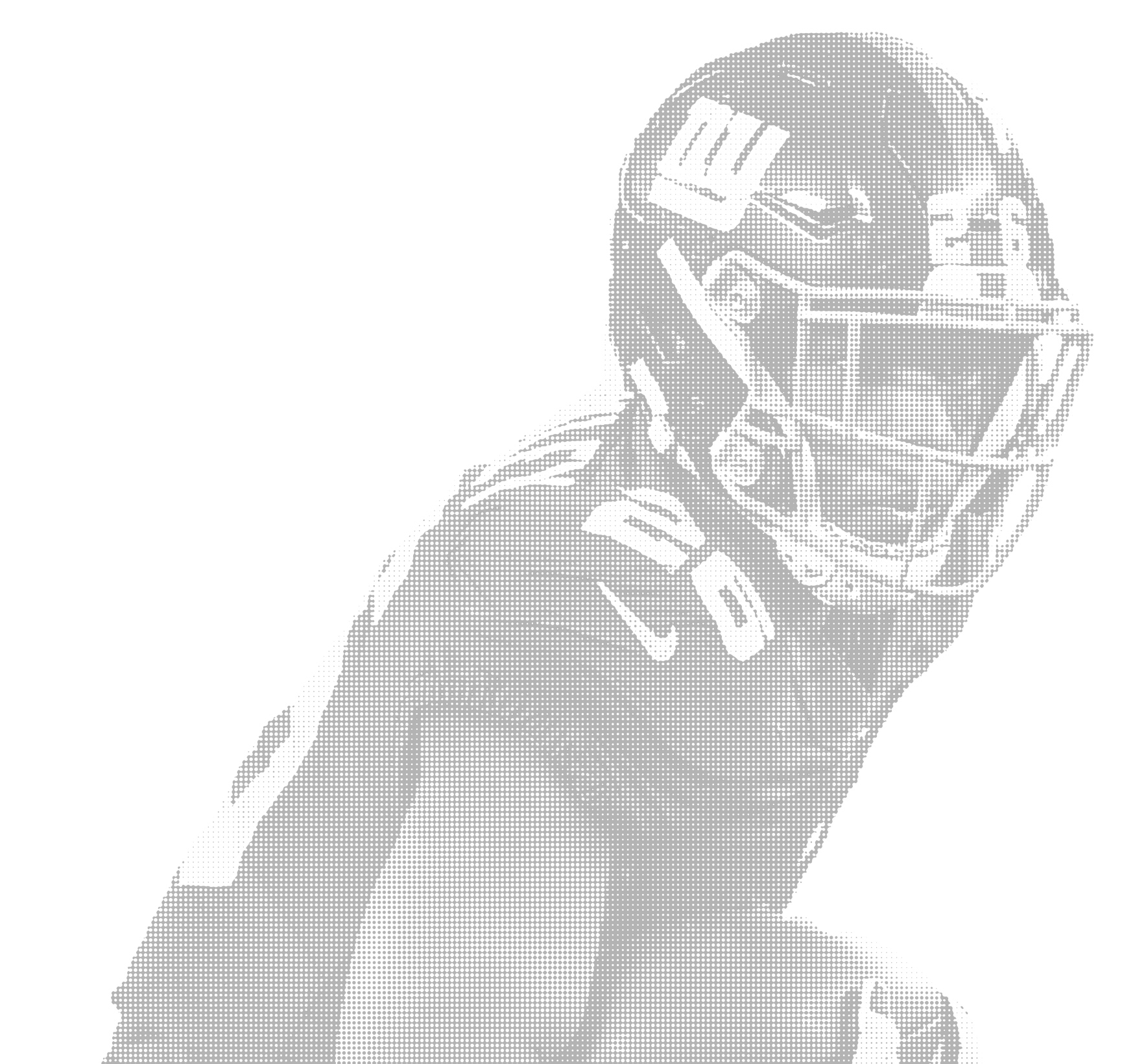
— in this post —
~ story
~ by the numbers
~ featurettes
~ pages
~ reading
~ watching
— story —
The National Football League (NFL) is asking inventors, scientists, physicians, and engineers to make the game of football safer. 300 of the brightest minds from around the world gathered at a symposium to talk about changes that could be made — one of the key improvements will be a better helmet design.
The NFL’s initiative — called Head Health Tech — set aside $3 million in grants to support development of new helmet prototypes. The goal of the NFL helmet challenge is preventing traumatic head injury to players through innovation. The science teams are exploring:
- advanced modeling software — to see how injuries happen, test wearable gear
- improved helmet design — to protect the skull, neck, and brain
- composite materials — to construct better gear that can absorb + withstand crushing impact
Injuries are a mounting concern.
Traumatic brain and spine injuries — such as concussion, whiplash, fractured skull, and broken neck bones — have been an increasing concern for football players from youth to adult. These injuries affect both amateur and professional leagues. Head trauma from impact shock can lead to life-long disability and even death. In the 100 years since popular football became an all-time American contact-sport, few improvements have been made to the safety gear that makes-up a standard football uniform.
The NFL said: “We see opportunities to change the paradigm of how helmets are designed — and use the world’s state-of-the-art from multiple fields. There are new approaches, new materials, new concepts.”
This is the league’s first helmet challenge. The winner of the contest will be awarded $1 million and also $2 million in grant funding to develop the prototype. The first round of proposals are due January 2020 — and final helmet prototypes are due May 2021.
Year 2020 marks the NFL’s 100th game season — and public scrutiny is intensifying, while legal teams and families demand that players be better protected from concussion. A team of neuro-scientists at a start-up called BrainGuard are working quickly to develop a better helmet that can prevent brain injuries.
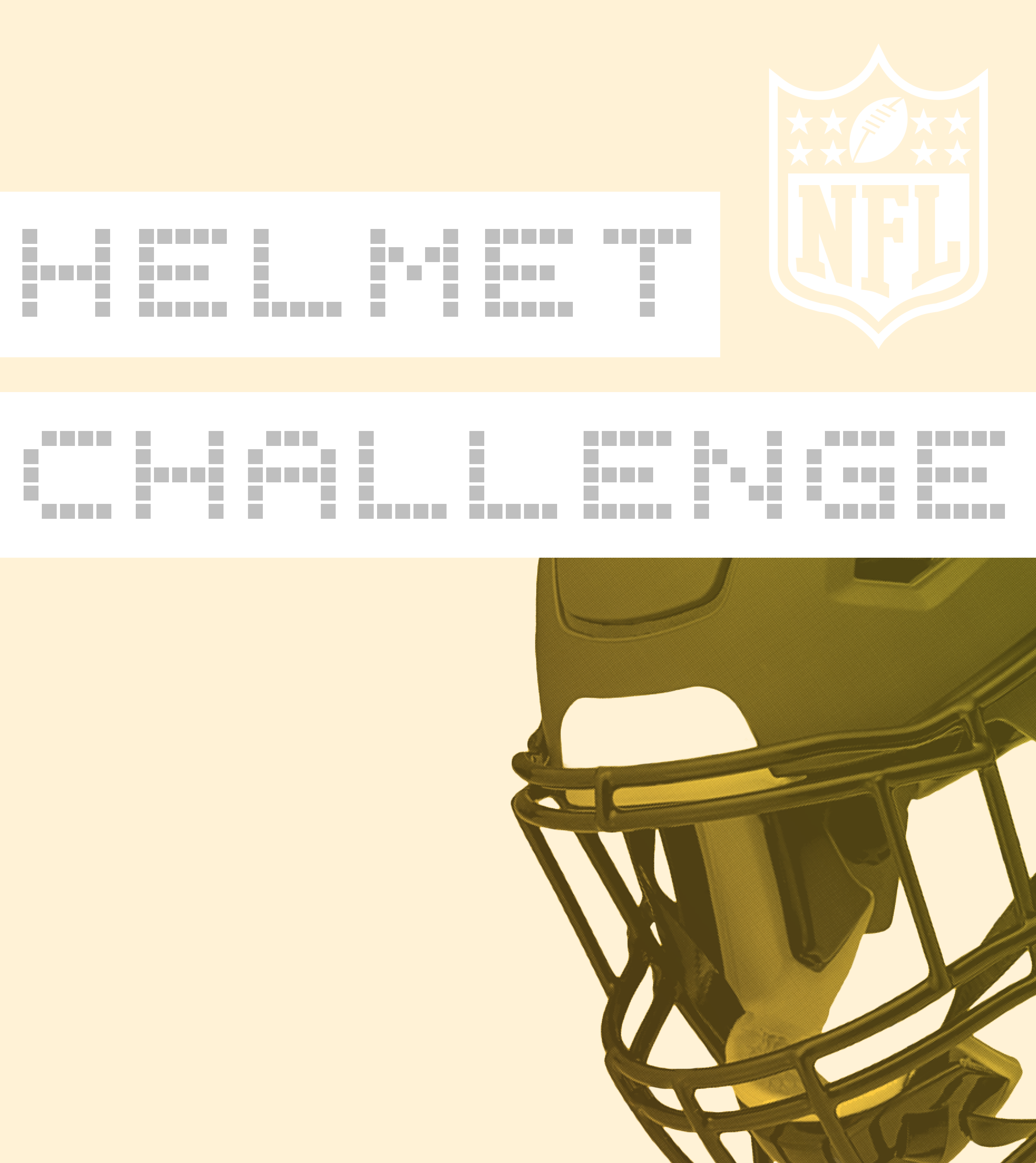
image | above
The NFL’s helmet challenge is part of their Head Health Tech initiative.
art: by NFL
Designing for shock absorption.
Pressure from the new football season — and continued heart-breaking accounts from NFL players who suffered severe brain injuries — makes the roll-out of a better helmet increasingly urgent.
BrainGuard thinks its design could be a game-changer. Their team of engineers, led by neuro-scientist Robert Knight MD, bashes a prototype football helmet from every angle — hitting it again and again — to see how it absorbs and disperses energy before the blow impacts the brain.
The helmet features an inner and outer shell — connected by highly absorbent padding and a network of rubber struts that stretch, acting as shock absorbers. No matter where the helmet is hit, only the outer shell moves.
Knight explained: “Every time it does that, and it moves, these struts are absorbing some of the force — mitigating the amount of force that goes to the inner shell, which then of course goes directly to your skull and to your brain.”
The design specifically addresses rotational force injuries: the twisting and turning of the brain caused by severe blows to the head. When tested against other helmets, BrainGuard says the amount of rotational force was reduced by 25 % — 45 %.
Life-threatening second impact syndrome.
The medical condition called second impact syndrome is a potentially catastrophic injury that occurs when a person — who already has a concussion — sustains a second head injury, before symptoms from the first concussion have healed. Concussion causes brain inflammation. If the patient sustains a second head injury during this vulnerable time, the brain can swell so much there isn’t enough space in the skull — this can destroy brain tissue. And in some cases lead to death.
Improved helmets must be designed to prevent the player from sustaining a concussion at all. Current helmets don’t provide protection from extreme impact, rotational forces, or the cumulative effect of multiple collisions.
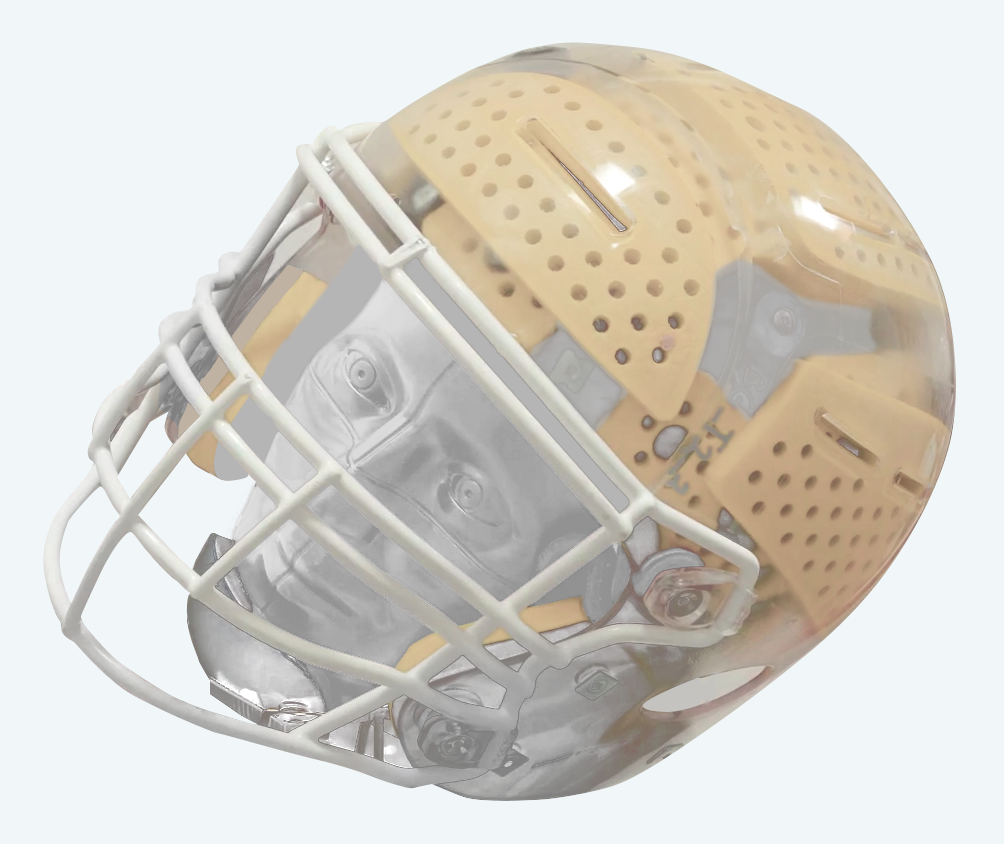
image | above
Prototype of a helmet that absorbs shock + rotational forces.
photo: by BrainGuard
A need for new standards.
Football players’ parents and coaches welcome any safety improvements. The helmet is a critical piece of gear, like airbags in motor vehicles. And the same way airbags are now required by law in all automobiles, BrainGuard hopes its 2-shelled helmets will become standard equipment — not just for football players: but also for hockey, baseball, and cycling. Any sport or activity where a better helmet could reduce brain injuries.
The NFL has 1,700 players. But there are 1.2 million youth each year playing Pop Warner football, and high school + college football — who are equally at risk for head injury. 63,000 high school students in the United States suffer a traumatic brain injury per year, leaving many kids with persistent long-term physical + cognitive disability.
The World Health Organization predicts that traumatic brain injury will become a leading cause of death + disability in the world by year 2020.
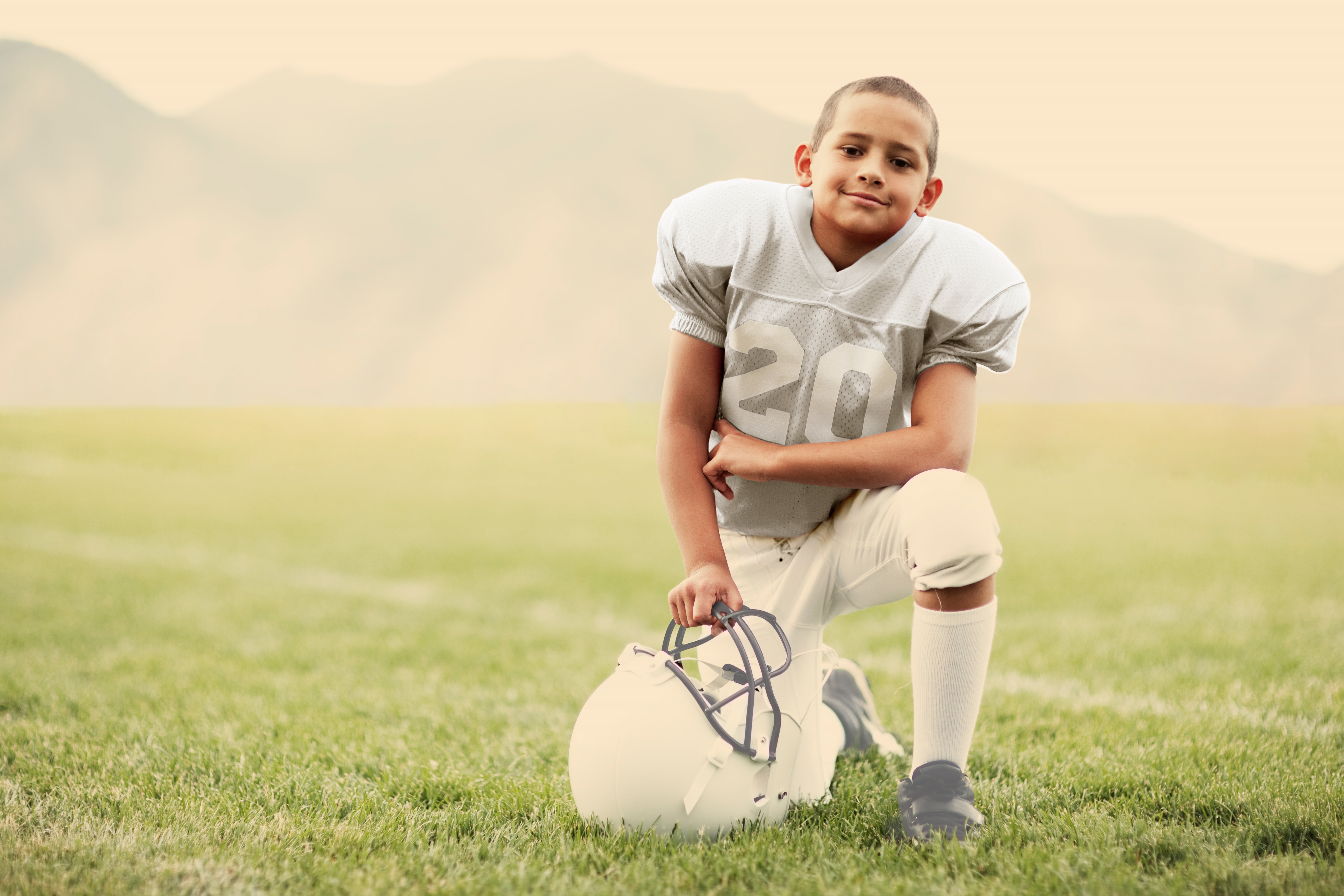
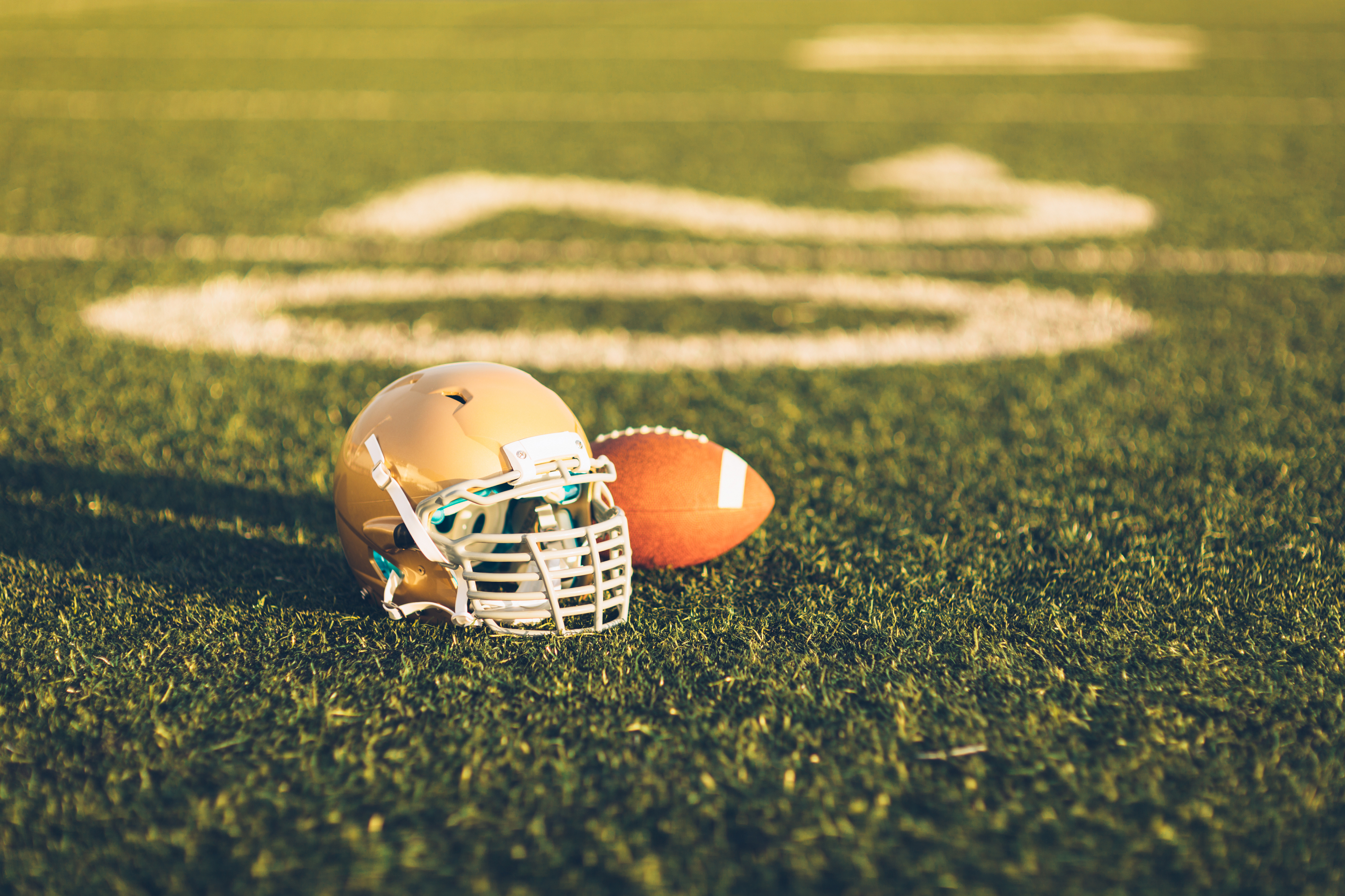
featurette | watch
group: by Univ. of California + BrainGuard
featurette title: Building a better helmet
featurette | watch
group: by Univ. of Washington + Vicis
featurette title: Building a better helmet

— by the numbers —
statistics: by CDC
source: data
— from traumatic brain injury
— over a period of 1 year
- 2.5 million emergency room visits
- 56,000 deaths
- 282,000 hospitalizations
* not including military activities
* for year 2013
featurette | watch
group: by CDC
featurette title: What is a concussion?
 on the web | pages
on the web | pages
CDC | home
CDC | Heads-Up
CDC | helmet safety
Heads-Up by CDC is an education pack about safe sports and activities for kids + teens.
The materials teach prevention, recognition, and response to head concussion and other serious brain injuries.
tag line: saving lives + protecting people
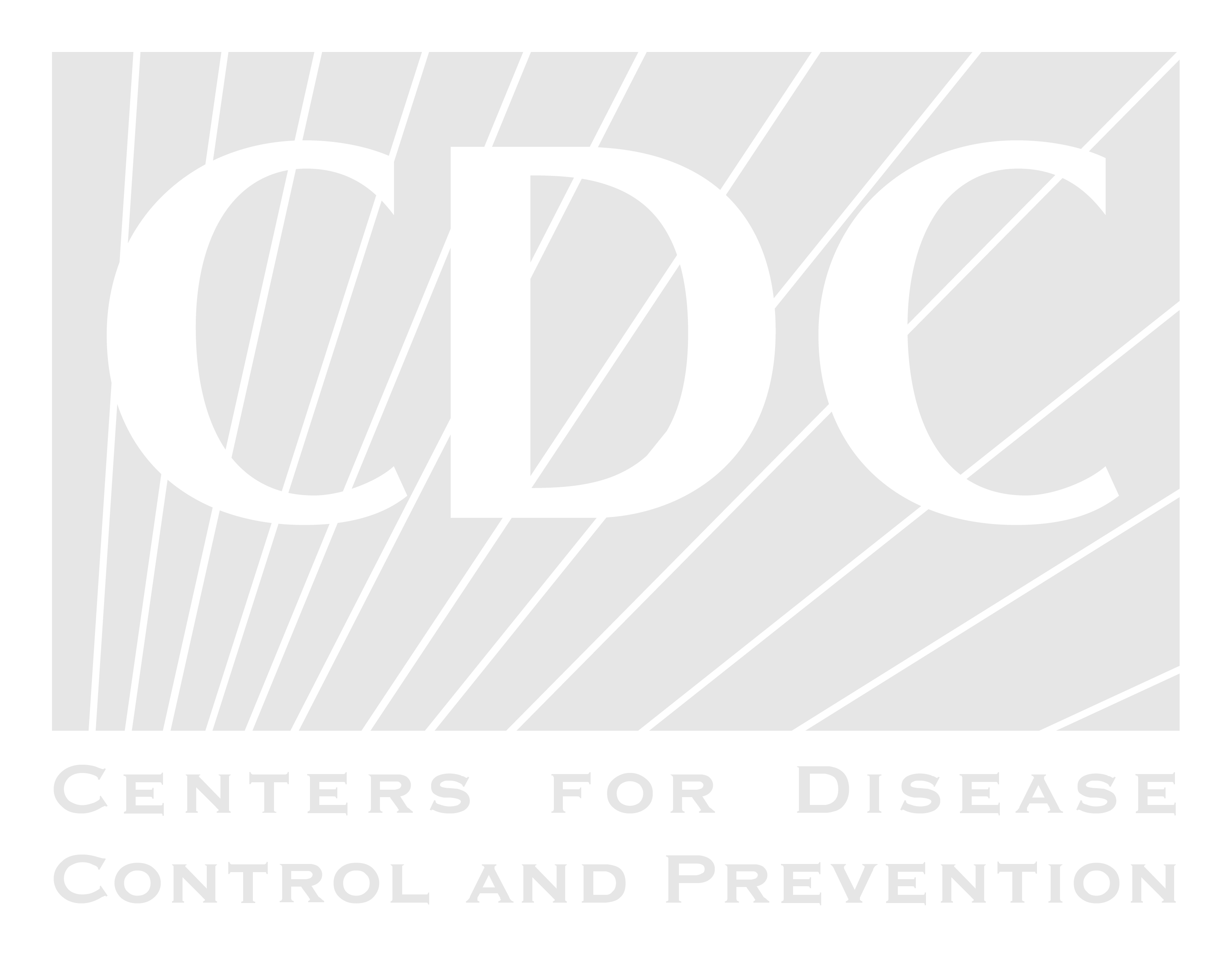
Hope for BrainGuard’s prototype helmet.
The helmet designed by BrainGuard has layers that move to protect the head.
BrainGuard has been awarded 13 United States patents + 6 foreign patents. Their innovative, multi-layered helmet protects against rotational shear forces that are a major contributor to traumatic brain injury (TBI). These damaging forces also play a role in the brain’s accumulation of toxic, malformed proteins seen in chronic traumatic encephalopathy (CTE) — a brain disease that forms from repetitive head blows.
Encephalopathy is a medical term meaning: brain disease, damage, or malfunction. It has a wide range of symptoms
- mild — such as memory loss or personality changes
- severe — such as dementia, seizures, coma, or death.
CTE is consistently found in people who’ve suffered multiple traumatic brain injuries — from accidents, sports, or military experiences. BrainGuard’s helmet design solution results in marked rotational force reduction in lab testing. The hope for the improved helmet is that is can prevent concussion.
IMAGE
featurette | watch
group: by Associated Press
series: Science Says
featurette title: How repeated head blows affect the brain
tag line: The definitive source for news.
— summary —
The medical term CTE stands for chronic traumatic encephalopathy. Researchers are tackling fresh questions about this long-term degenerative brain disease now that it has been detected in the brains of nearly 200 football players after death. As a new NFL season gets underway, here’s a look at what’s known about CTE.
We examine the evidence behind health + science claims by putting them into context. Our occasional series Science Says helps you dissect the latest research and why it matters.
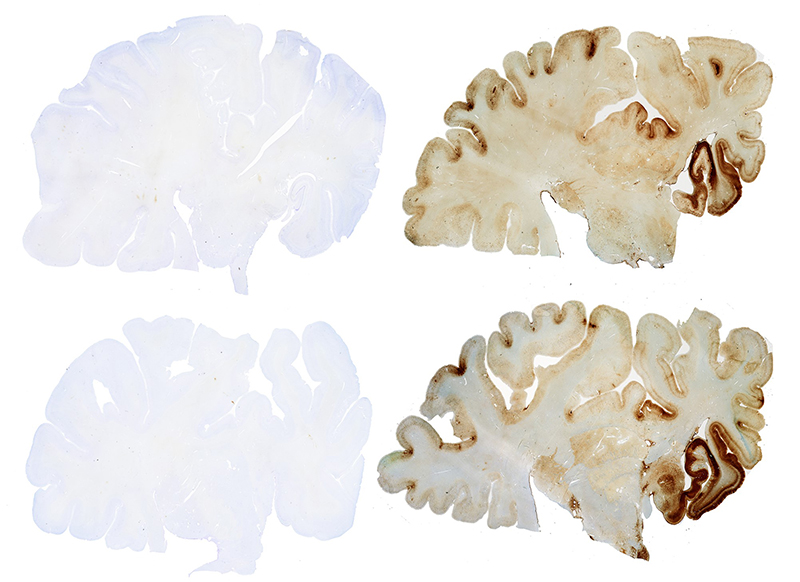
image | above
left-side of photo — cross-sections of healthy human brain tissue.
right-side of photo — cross-sections of a human brain suffering from CTE.
This image from a medical research project at Boston Univ. clearly shows the pathology associated with CTE — a long-term brain disability that’s caused by traumatic brain injury like concussion.
photo: Boston Univ.

on the web | pages
BrainGuard | home
BrainGuard | press
tag line: Layers that move to protect — the magic is in the motion.
on the web | pages
Vicis | home
Vicis | YouTube channel
tag line: protect the athlete + elevate the game
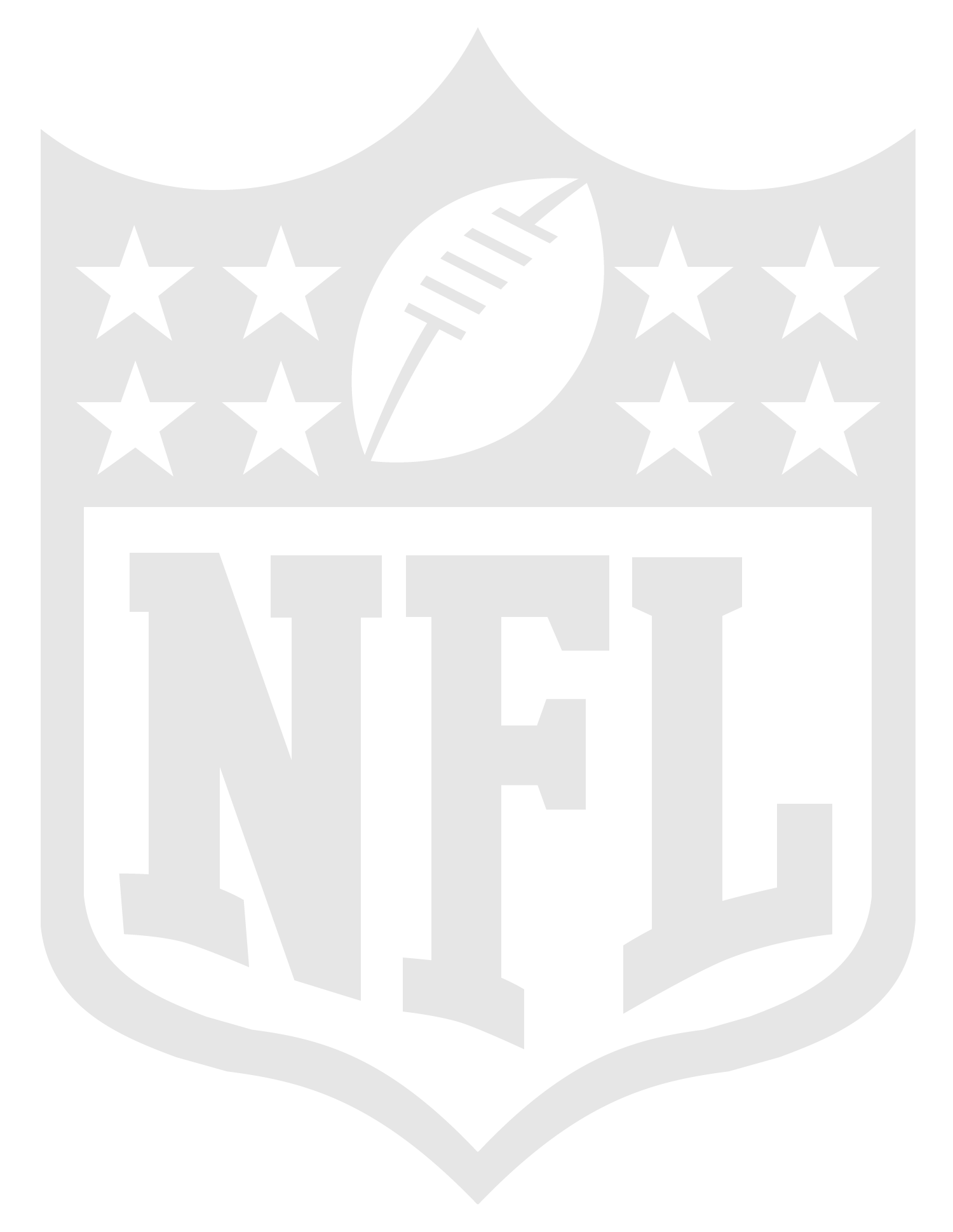 on the web | pages
on the web | pages
NFL | home
NFL | YouTube channel
Next Generation Stats • by NFL | home
Player Health + Safety • by NFL | home
Player Health + Safety • by NFL | helmet challenge
Player Health + Safety • by NFL | head health tech
tag line: play smart + play safe
on the web | pages
Concussion Legacy Foundation | home
Concussion Legacy Foundation | YouTube channel
tag line: We are solving the concussion crisis.
on the web | pages
Headway Foundation | home
Headway Foundation | YouTube channel
tag line: Real concussion progress.
on the web | pages
Boston Univ. | home
Boston Univ. | Chronic Traumatic Encephalopathy Center
tag line: Conducting high-impact, innovative research on chronic traumatic encephalopathy.
on the web | pages
Virginia Polytechnic Institute + State Univ. | home
Virginia Polytechnic Institute + State Univ. | helmet ratings
tag line: Translating research to reduce concussion risk.

on the web | reading
group: Associated Press
story title: NFL at 100
deck: Helmets go high-tech in quest for player safety
read | story
tag line: The definitive source for news.
on the web | reading
publication: Wired
story title: Football’s concussion crisis is awash with pseudo-science
deck: Products that offer a “seat belt” or “bubble wrap” for the brain claim to reduce head trauma
deck: If only the laws of physics worked that way
read | story
on the web | reading
publication: San Francisco Chronicle
story title: What will football helmets look like in future?
deck: Scientists may know
read | story
on the web | reading
publication: Boston
story title: Reebok launches the CheckLight: a head monitoring skull-cap
deck: The CheckLight monitors head trauma in real time
read | story
watch | featurette
publication: Boston
story title: Company makes high-tech football helmets worn by the pros
deck: Xenith is changing the football helmet game
read | story
on the web | reading
group: Univ. of California
story title: New helmet design can deal with sports twists + turns
deck: BrainGuard is building a better helmet
read | story
on the web | reading
broadcast: NBC
story title: CTE study finds evidence of brain disease in 110 out of 111 former NFL players
read | story
— summary —
Research on 202 former football players found evidence of brain disease in nearly all of the athletes: from the NFL and college sports — to high school students. The study is an important update on CTE, a brain disease linked with repeated head blows.
on the web | watching
broadcast: NBC
show title: Today
episode title: Football to Battlefield
deck: Helmet company Vicis expands focus from NFL — to include kids + military
watch | featurette
tag line: Share the moment.
— summary —
The high-tech helmets made by company Vicis are ranked best by the NFL — for reducing the impact of blows to the head. Already a top brand in world-wide professional + amateur sports for adults — Vicis also wants to make headgear to protect kids on the field. Eventually Vicis wants to take its helmet research to the battlefield, getting headgear to military troops in harm’s way.
on the web | watching
publication: Digital Trends
featurette title: Vicis creates the football helmet of the future
watch | featurette
tag line: Upgrade your lifestyle.
 on the web | watching
on the web | watching
platform: Patreon
group: by Entertain the Elk
featurette title: The evolution of football helmets
watch | featurette
tag line: Videos exploring art + entertainment.
IMAGE
— notes —
Univ. of CA = University of California • United States
Univ. of WA = University of Washington • United States
Virginia Tech = Virginia Polytechnic Institute + State Univ. • United States
ER = emergency room
TBI = traumatic brain injury
CTE = chronic traumatic encephalopathy
AP = Associated Press
NBC = National Broadcasting Company
NFL = National Football League
WHO = World Health Organization
CDC = Centers for Disease Control + Prevention • United States